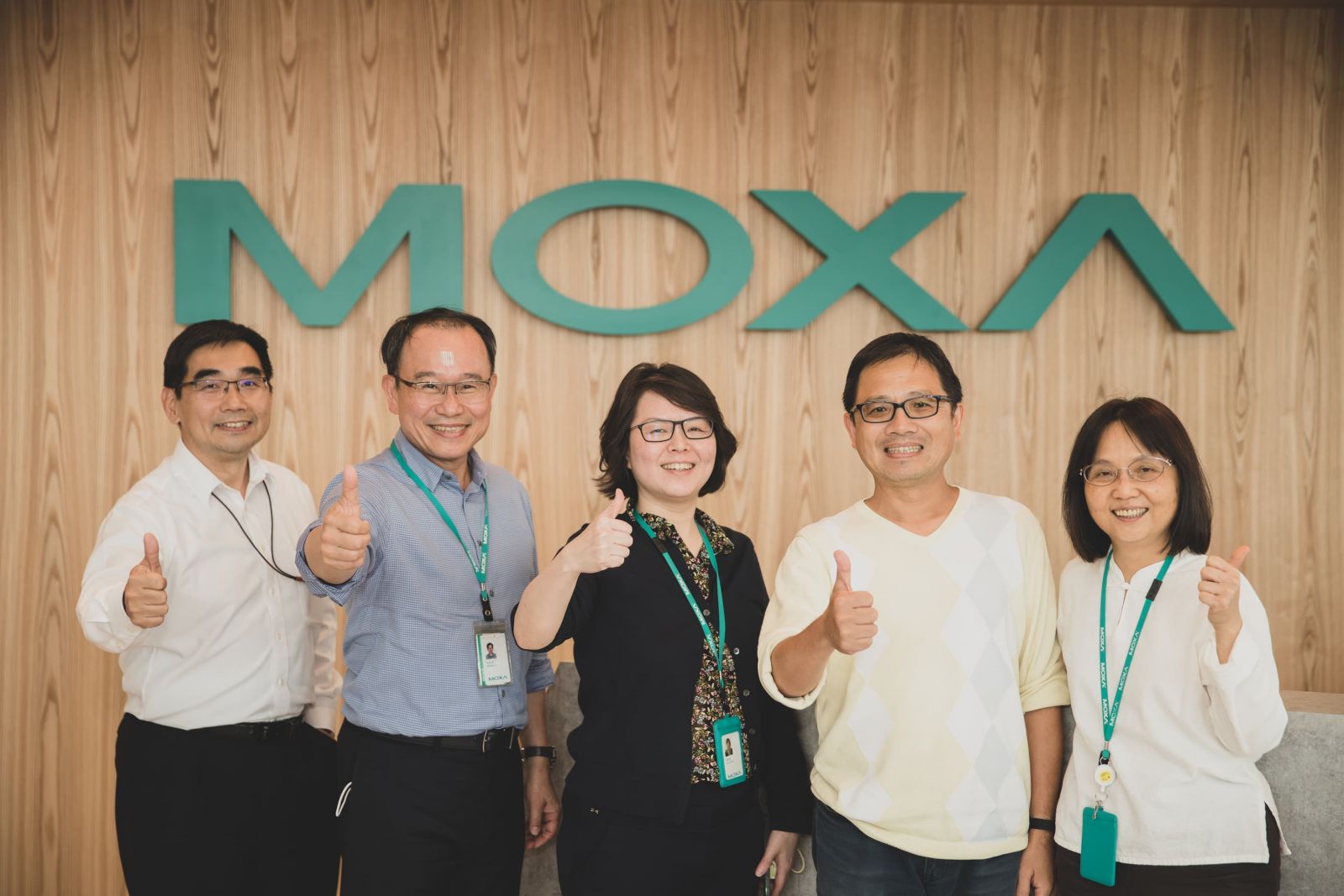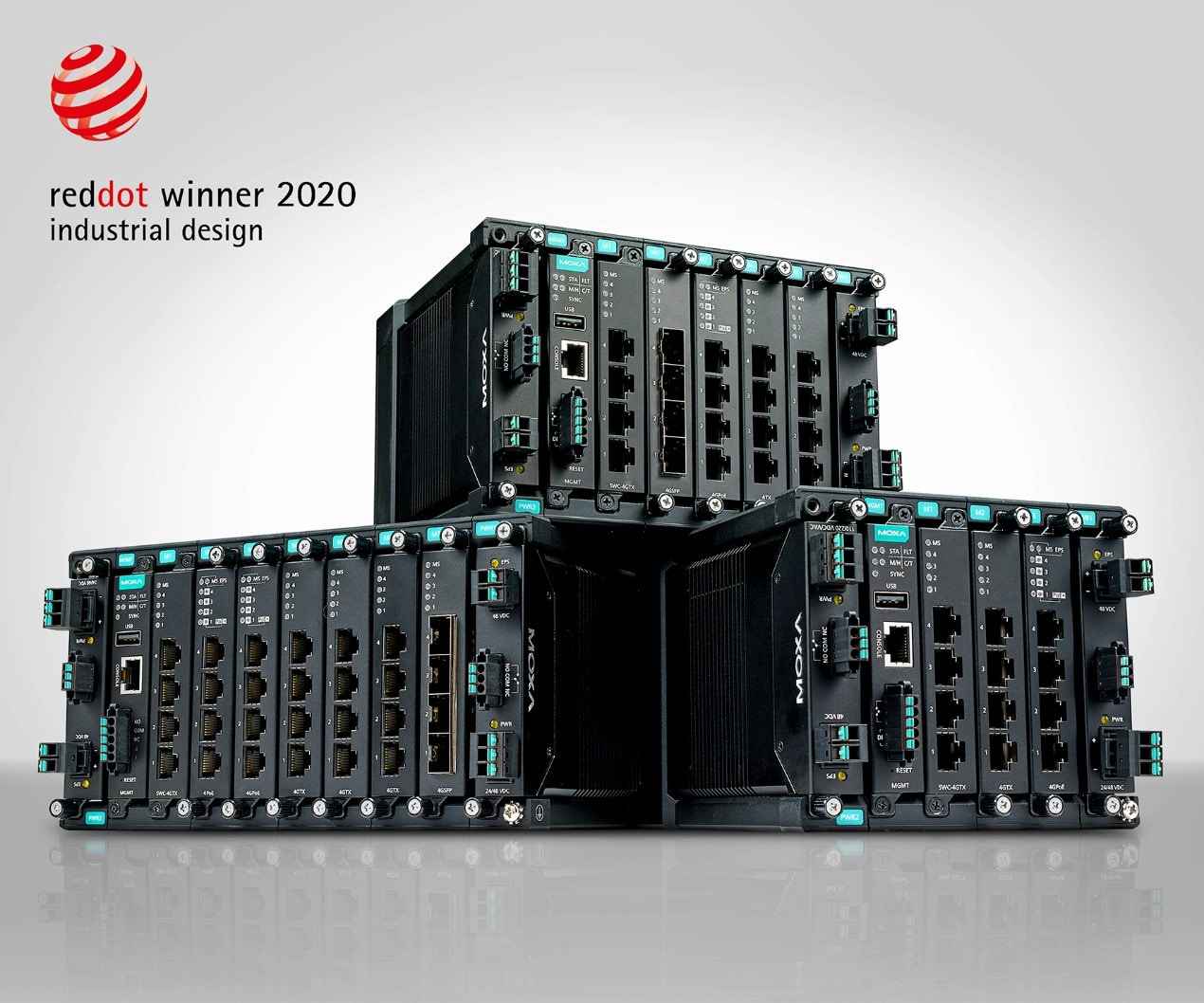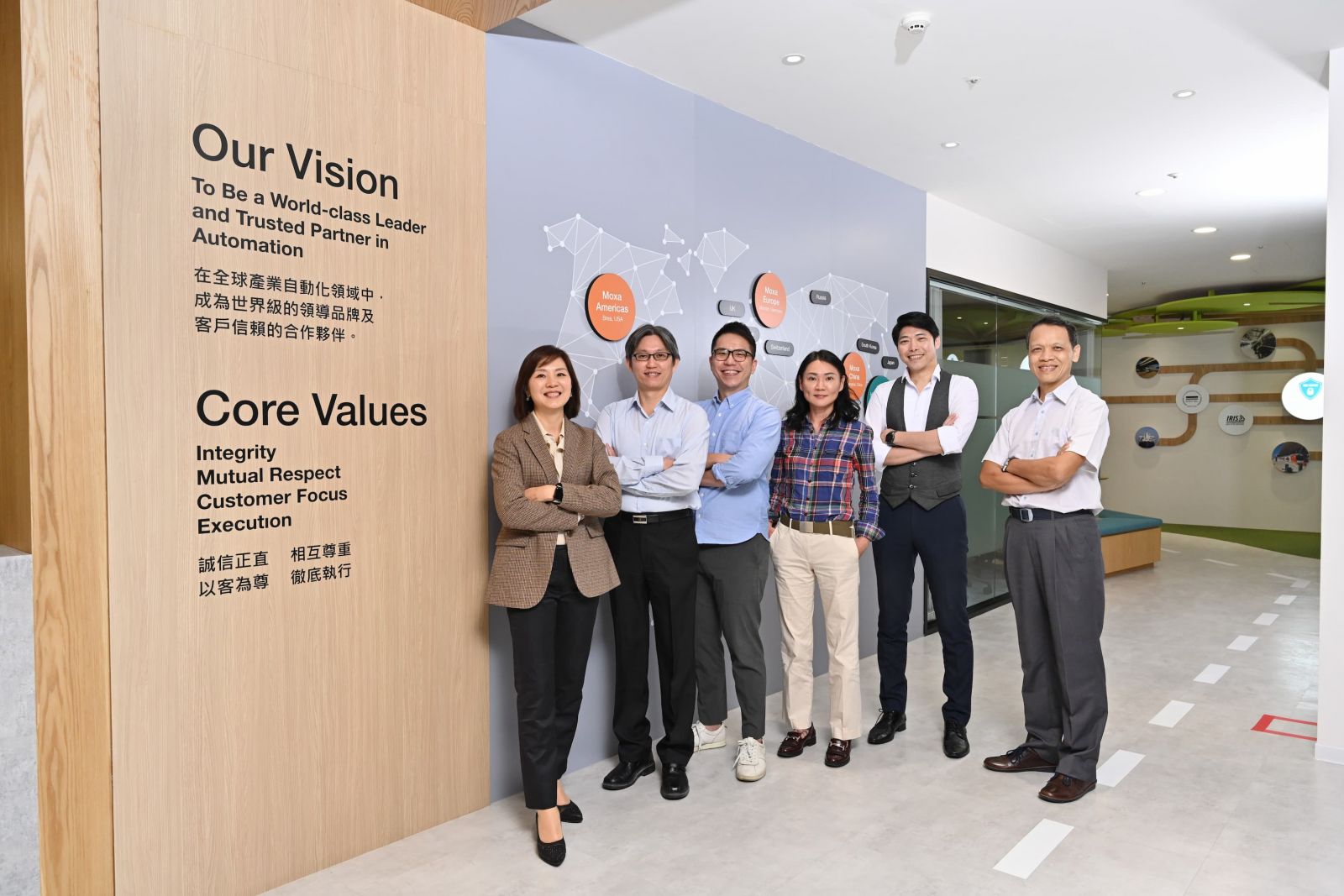Economy & Business
Digital transformation at MOXA
People-centric concept drives digital transformation at MOXA
Company advocacy
Founded in 1987 and starting with 5 co-founders, MOXA has persevered in their emphasis on R&D and quality, which leads to its scale-up and ownership of 1,300 employees around the world. MOXA specializes in industrial networking products and communication solutions for applications in six major areas: manufacturing, rail, power, oil & gas, marine and intelligent transportation. MOXA's headquarters and production base are located in Taiwan, with a comprehensive distribution and service network in more than 60 countries around the world.
The "People-Centric" mindset is an important part of the MOXA culture. In creating an environment of mutual trust, MOXA has set out four specific practices that activate the formula for creating shared value, spreading trust from the inside out:
1. Manifest entrepreneurship through equality without the effect of hierarchy.
2. Teamwork generates additional value of strength and ideas and realizes co-creation.
3. Connect employees to distributors, suppliers, outsourced manufacturers, and even customers. Build long-term relationships and create value.
4. Treat people with sincerity in partnership and bring DNA of sharing.
"Trust is the at the core of MOXA and creating an environment of trust is what MOXA has been invested in for the past three years. In order to enable employees to share their feelings to build mutual trust and a sense of ownership of the business, the company provides professional and advanced all-around training courses for all employees to freely share their feelings and situations."
- Amanda Wu, Co-CEO, Group Executive Board / MOXA

Group Executive Board, MOXA
Centralized R&D and manufacturing
To leverage high quality and durability as an obstacle for competitors to enter the market, MOXA adopts a centralized R&D and manufacturing model. In research and development, MOXA adopts independent research and development from IC, software, firmware to hardware. MOXA can quickly develop customized solutions based on customers' unique needs and quickly reflect market perspectives and needs in the process of product development, so that the research and development results are more in line with the market. In manufacturing, the model centralized in Taiwan can fully utilize the advantages of Taiwan's IT industry in terms of high density and complete parts ecosystem in the supply of high-tech components.
"MOXA's most important niche is its emphasis on R&D. In addition to having our products designed and developed in-house, we even develop our own CPUs, software operating systems, and key components for our computers."
- Michael Lin, Co-CEO, Group Executive Board / MOXA
Past supply chain practices
The centralized R&D and manufacturing model assure quality, while also posing challenges in supporting the global market. The main challenges are the response time in the supply chain and the time and cost of logistics.
In the past, MOXA's supply chain was linear, where the company consolidated customer orders from regional business units (RBUs) around the world to forecast demand. The orders include some run-rate products that could be forecasted based on historical data, as well as some custom products that are difficult to forecast but account for a big proportion.
When an order is established, product quantity and corresponding material requirements are transferred to manufacturing and logistic units, including suppliers and contractors, which only receive information from the previous station in the supply chain, resulting in long waiting and response time.
Digitally connected supply chain approach
MOXA's current digitally connected supply chain takes a network structure. MOXA's Smart Logistics Center is the core of its digitally connected supply chain, where the RBUs transmit customers' order requirements and send the demand data to each supply chain system in a timely manner through a networked and visual ecosystem, reducing delay and waste of time. The response and planning from manufacturing and logistic units are also transmitted to each function simultaneously. Data is collected, validated, integrated, analyzed, and visualized, enabling MOXA to accelerate operational strategies, report in a timely manner, break down geographic boundaries, and prioritize decisions with greater accuracy.
Digital transformation journey
MOXA embarks on a digital transformation journey in three phases.
The first phase is Digital Operations, which aims to improve internal efficiency by establishing a digitally connected supply chain. This phase introduces the Smart Logistics Center as the foundation project for digital operations, stabilizing raw material supply and expanding warehousing and manufacturing capacity, as well as improving customer service quality and distribution performance.
The second phase is Digital Analytics, which aims to build a data platform and advanced analytics capabilities to process operational data. This phase introduces digital projects such as data lake and data platform to bring data up to date and assist in decision making, as well as demand planning, which forecasts future run-rate production and sales plans by analyzing and modeling historical production and sales data.
The third phase is Digital Trust, which aims to build secure products and provide secure industrial networking solutions. This includes security projects to reduce information security threats and operational risks and introduces software cloud to enhance product capabilities and functionality and develop industrial solutions.
The ongoing Fly Wheel Project, which spans across three phases, is designed with smart supply chain at its core, integrating processes and systems to improve operational efficiency, strengthen delivery capabilities, and reduce inventory in preparation for future business model changes.
"The initial digital system rollout of the Smart Logistics Center did not go as planned. However, MOXA's first-line employees took the initiative to find the reasons for system malfunctions and machine downtime by adopting a "trial and error" approach to solve the problem step by step. The task was completed within three months, and delivery issues were minimized. Since the employees have great cohesiveness, ownership, and accountability, we used our willpower to make up for the shortcomings during digital transformation, even though the transformation was not always smooth."
- Amanda Wu, Co-CEO, Group Executive Board / MOXA

Reddot Winner 2020 (Industrial Modular Ethernet Switch)
Cultural difference between cost efficient and people-centric
In general, manufacturers tend to pursue "cost efficiency" as an important value in their corporate culture. MOXA, however, adopts a "people-centric" mindset in its corporate culture, which is very different from its peers. To compare two different value orientations of corporate culture, it can discuss four dimensions.
In terms of corporate strategy formation, MOXA replaces the top-down approach, which most other companies have, with a bottom-up approach initiated by employees. In terms of business model objectives, MOXA emphasizes the pursuit of long-term operational innovation instead of short-term cost reduction. In terms of digital applications, MOXA places great emphasis on human integration and collaboration instead of focusing on process efficiency like other companies do. Last but not least, in terms of people and culture orientation, MOXA regards talent as an important asset and prioritizes talent development over performance orientation.

MOXA's Volunteer Services for Remote Elementary
Critical success factors
MOXA has two critical success factors in digital transformation. The first is "leadership with empathy." The leadership stands with the front-line employees with empathy and leads them to accomplish tasks together without hierarchy, which makes employees fully feel respected and empathized with. MOXA thoroughly demonstrates integrity, mutual respect, customer focus, and execution, in its corporate culture.
Employees embrace the changes brought about by new technology because they feel safe. MOXA employees are ready and open-minded for the applications of new technology. Just because new technology brings automation, doesn't mean that employees would have problems with their work safety or new processes interfering with their old practices. MOXA employees have a positive and inclusive attitude towards new technology.
Another key success factor is that the employees' have a strong sense of security. This is because a people-centric corporate culture brings full trust and tolerance from top to bottom, promotes various measures with employee's growth and value enhancement in mind, and is not afraid of making mistakes during trial and error. It makes employees feel the company's sincerity, which creates a qualitative change in the cultural DNA of the business and strengthens the sense of responsibility and cohesiveness.
MOXA's people-centric culture has a very distinctive feature – it is empathy-driven. The empathy-driven mindset fully demonstrates the integration of digitization and human-centric culture in employee experience. From the company's perspective, they are empathetic to the employees for their development and value, so they use digitalization to enhance the employees' value, rather than replace them.
The technology and changes brought by digital transformation process do not replace, but rather help employees to enhance their capabilities and values so that they are ready and open-minded to embrace technology, to strive for excellence, to share their successful experiences, and to stimulate the possibility of innovation among colleagues.

MOXA's Vision, Core Values and Teams
Lessons learned
Digitalization is the source of innovation, but people are the doers of innovation. MOXA has found a way to make innovation robust and sustainable by putting people at the center. A positive experience for leaders, employees, and customers is the basis for accelerating successful transformation, and when digitized innovation factors are put into this virtuous cycle, it can start smoothly and translate innovation into better results.
MOXA is not a perfect company, but it strives for perfection. Based on a human-centric mindset, MOXA has successfully blended digitalization with its original corporate culture, where efficiency and human-centeredness are magically balanced.